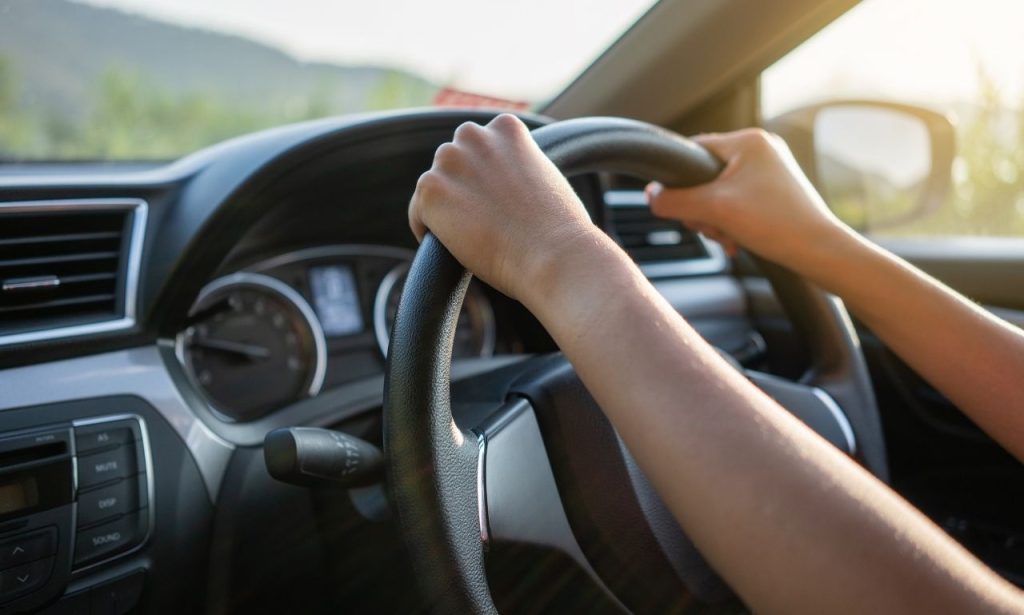Travelers often prepare for foreign languages, new currencies, and even regional dining customs. Yet many overlook a critical detail—road direction. In most of the world, vehicles keep right. However, in several popular tourist destinations, traffic flows on the left side. Failing to anticipate this shift can cause anxiety, or worse, dangerous mistakes. Understanding where left-side driving is standard helps travelers stay safe and confident abroad. Here are popular tourist destinations that drive on the left.
The United Kingdom

Anyone who’s visited Britain knows the streets are steeped in tradition. From narrow cobblestone lanes to modern highways, the United Kingdom insists on left-side driving. This rule traces back centuries. Knights on horseback preferred passing each other on the left to keep their sword hands free. That practice eventually evolved into the law of the road.
Modern travelers must quickly adjust. Rental cars typically place the steering wheel on the right, which can feel unfamiliar at first. Roundabouts add another challenge. Unlike the four-way intersections common in North America, these circular junctions demand clockwise movement. First-time drivers often grip the wheel tightly, hoping they exit at the right point.
In cities like London or Manchester, public transportation is reliable enough to make driving altogether unnecessary. Trains, buses, and underground systems efficiently connect neighborhoods. But head into the Scottish Highlands or rural Cornwall, and a car becomes essential. Expect narrow country roads edged with hedgerows, often just wide enough for one car. Meeting an oncoming vehicle requires pulling into a lay-by and waiting patiently. For cautious visitors, consider practicing in quieter towns before venturing into bustling city traffic.
Japan
Japan offers one of the most efficient public transport systems in the world. For many tourists, cars are unnecessary. Yet, outside the megacities, rural roads reveal the country’s charm—temples tucked into mountain sides, quiet fishing villages, and lush countryside. Here, driving becomes the key to discovery.
Like Britain, Japan enforces left-hand traffic. The tradition began in the 19th century when British engineers built the nation’s early railways. As trains and stations aligned left, the roads followed. Today, drivers sit on the right-hand side of the car and keep to the left.
Japanese roads are well-marked, with signs often in both Japanese and English. However, narrow streets and high toll fees can be a surprise for foreign drivers. Highways connecting Tokyo to Osaka or Sapporo to Hakodate require payments at multiple points, which adds to travel costs. That said, the scenery makes up for it. Cherry blossoms framing winding mountain roads or coastal views near Okinawa leave lasting impressions.
Driving etiquette here is strict. Japanese drivers rarely honk, and rules are enforced with heavy fines. Foreigners quickly learn that patience and respect go a long way. For safety, many tourists avoid driving in central Tokyo and instead rent cars for regional adventures.
Australia
Australia’s vast landscapes make driving almost unavoidable. Cities like Sydney, Melbourne, and Brisbane feature strong public transport networks, yet exploring the Outback or coastal highways requires a car. Like Britain, Australians drive on the left, a system inherited during colonial times.
Highways between major cities stretch endlessly. Long distances require preparation, especially fuel and water supplies. Venturing into the Outback without planning can be dangerous. Roadhouses are spaced far apart, and cell reception often disappears for hours. Even on the Great Ocean Road, one of the country’s most famous drives, the winding coastal routes demand alertness.
Wildlife adds another challenge. Kangaroos and wombats often dart across highways, particularly at dawn or dusk. Collisions cause severe damage to vehicles and drivers. Authorities advise travelers to avoid nighttime driving in rural areas. In urban centers, speed cameras and strict enforcement keep drivers cautious. Tourists renting cars will find that most vehicles are automatic, which eases the transition to driving on the left side of the road.
Despite the challenges, Australia rewards drivers with breathtaking sights. Coastal cliffs, desert plains, and rainforests all become accessible when you take the wheel—so long as you remember to stay left.
South Africa
South Africa is a destination where driving unlocks adventure. From Cape Town’s wine country to the savannas of Kruger National Park, left-side driving dominates. This rule, too, originates from British influence.
Highways connecting Johannesburg, Pretoria, and Durban are modern and reliable. But once you leave major routes, road conditions vary dramatically. Potholes, limited lighting, and uneven surfaces are common. Many visitors rent SUVs for greater clearance and durability. Self-drive safaris are a highlight here, giving tourists the thrill of spotting elephants or lions without leaving the vehicle.
Traffic habits demand extra attention. Minibus taxis, a backbone of local transport, often weave unpredictably through traffic. Pedestrians sometimes cross busy roads without warning. Defensive driving is essential. Tourists are also advised not to drive at night outside urban centers for safety reasons.
Despite the warnings, South Africa offers incredible rewards. Imagine driving the coastal Garden Route, with ocean waves crashing on one side and mountains on the other. Mastering left-side driving becomes a small price for such unforgettable experiences.
New Zealand
New Zealand is a driver’s dream. Scenic highways twist through fjords, past lakes, and over rugged mountain passes. Like Australia, the country follows left-side driving, another legacy of British influence.
Rental campervans are popular, giving visitors freedom to explore both islands at their own pace. But freedom comes with responsibility. Many roads are narrow, with sharp curves and one-lane bridges. Signs remind drivers to yield to oncoming traffic before crossing.
Weather adds complexity. A sunny morning in Queenstown can turn into heavy fog or icy roads by afternoon. Tourists must adapt quickly, slowing down and maintaining safe distances. Authorities run campaigns urging visitors to “keep left” after rest breaks, as tired travelers sometimes drift instinctively to the right.
Despite the challenges, New Zealand’s natural beauty makes every mile worthwhile. From Milford Sound to Rotorua’s geothermal wonders, the views feel almost surreal. Driving here demands focus, but the reward is unparalleled freedom.
India
Driving in India is unlike anywhere else. Officially, traffic flows on the left, following the influence of colonialism. But the reality on the roads is far more chaotic.
Cities like Delhi and Mumbai teem with cars, buses, motorcycles, and rickshaws all fighting for space. Horns blare constantly, not as anger but as a form of communication. Lane markings are more suggestions than rules. Tourists quickly realize that theory and practice often diverge.
Hiring a driver remains the safest option for visitors, especially in urban centers. Those who insist on driving themselves face constant surprises. Pedestrians cross busy highways. Cows rest in the middle of the streets. Trucks overtake suddenly, and motorbikes weave between cars. Rural highways range from modern, multi-lane expressways to crumbling, single-lane roads.
For adventurous travelers, the experience is unforgettable. Yet patience, adaptability, and nerves of steel are required. India may follow the left-side tradition, but understanding its unique road culture is the real challenge.
Conclusion
So, which popular tourist destinations drive on the left? The list includes the United Kingdom, Japan, Australia, South Africa, New Zealand, and India. Each country enforces this rule for different historical reasons, but the effect is the same: foreign visitors must adapt.
For some, such as the UK or Japan, the adjustment is smooth due to disciplined driving environments. For others, such as India, the challenge lies not in direction but in the culture of traffic itself. Either way, travelers benefit from preparation. Renting smaller vehicles, practicing in low-traffic zones, and studying road rules can reduce stress.
Driving abroad offers freedom unmatched by public transport. It opens doors to rural towns, hidden coastlines, and mountain passes. But freedom comes with responsibility. Respecting local customs, being cautious, and—most importantly—remembering to stay on the left side ensures safety and confidence. Whether cruising New Zealand’s fjords, tackling Australia’s deserts, or circling a London roundabout, left-side driving becomes part of the travel experience itself.
Also Read: The Best Hot Weather Hiking Clothes in 2025
FAQs
The UK, Japan, Australia, South Africa, New Zealand, India, and several others follow left-side driving traditions.
Historical habits and colonial influence shaped the rule. Many nations adopted Britain’s left-hand system.
At first, yes. But after a few hours, most drivers adjust, especially with automatic cars.
Yes. In left-driving countries, cars come with right-hand steering wheels for easier alignment.





